VIENNESE INTERIORS 1900 – 1930
Does The Lion’s Head Also Have To Be On The Nightstand1 Or Must The Coal Shovel Come From The Hand Of An Architect2?
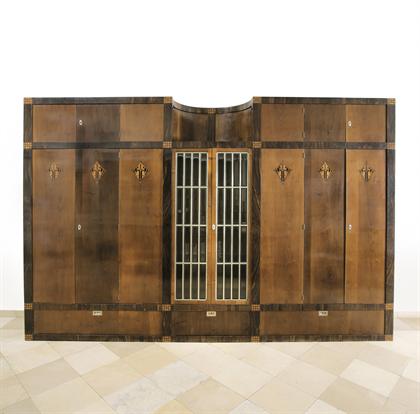 Josef Hoffmann
Josef Hoffmann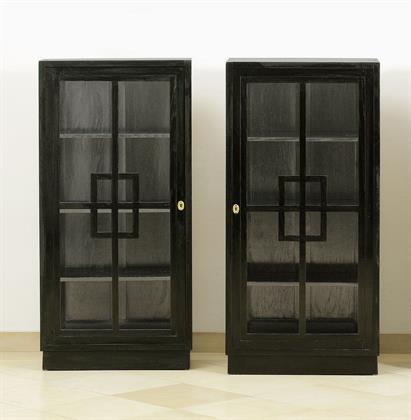 Josef Hoffmann zugeschrieben
Josef Hoffmann zugeschrieben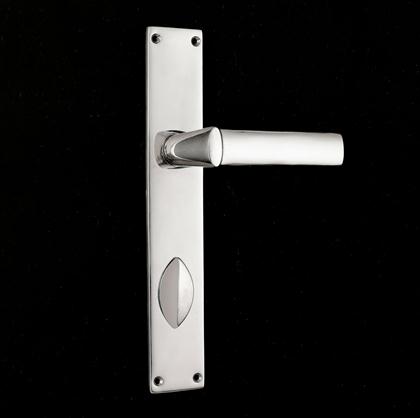 Josef Hoffmann
Josef Hoffmann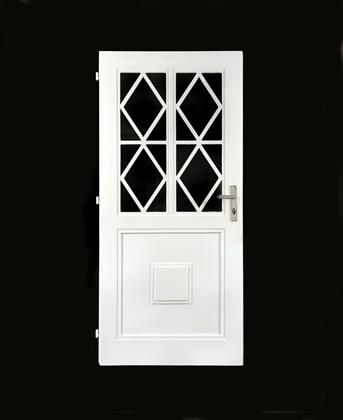 Hans Ofner
Hans Ofner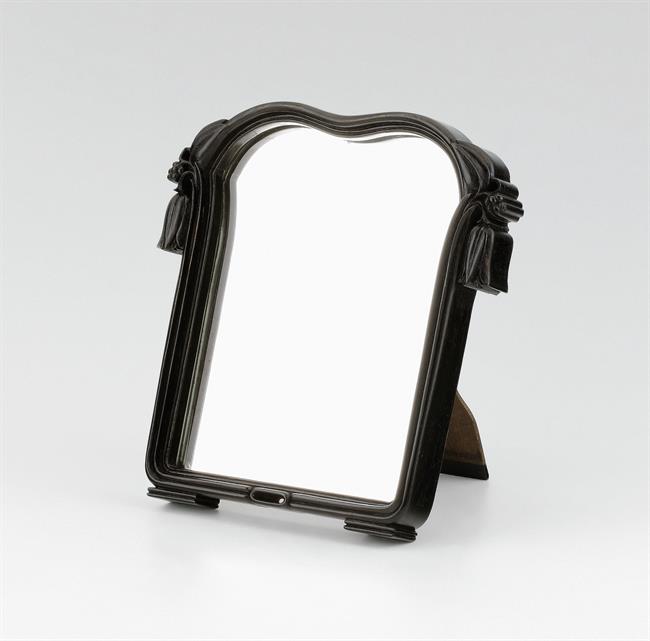 Josef Hoffmann
Josef Hoffmann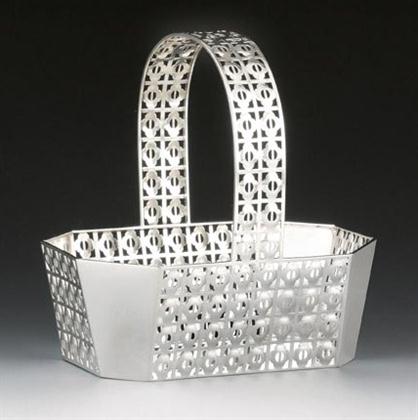 Josef Hoffmann
Josef Hoffmann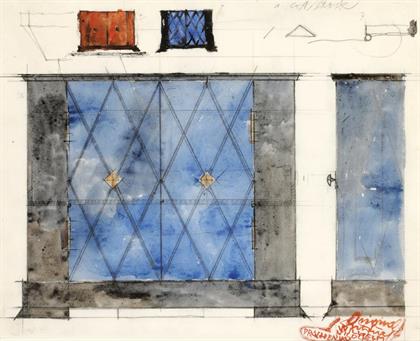 Wilhelm Nicolaus Prachensky
Wilhelm Nicolaus Prachensky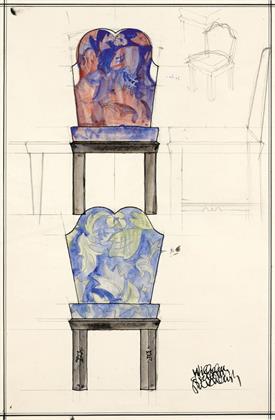 Wilhelm Nicolaus Prachensky
Wilhelm Nicolaus Prachensky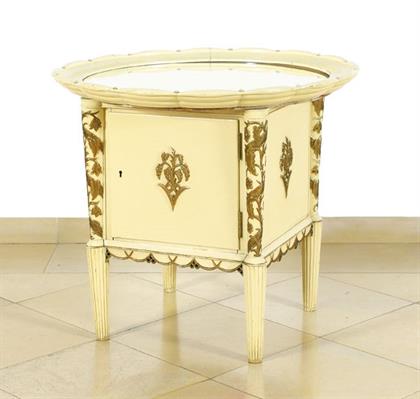 Otto Prutscher
Otto PrutscherRemarks on the Principles of Interior Decoration Prevalent around 1900 and in the Interwar Period
In 1898 Adolf Loos satirically criticised the ‘stylish apartments’,3 those pompous and prestigious Historicist living quarters, of the Ringstrasse era, raising the following rhetoric question: ‘What is that “style” anyway? It is hard to define. In my opinion the best answer was given by the worthy lady who said that if you have a lion’s head on the nightstand, and the same lion’s head is on the sofa, on the wardrobe, on the beds, on the chairs, on the washstand, in a word, on every object in the room, then that is style’4.
The longing for a new language of form adequate to the times naturally developed as a plausible reaction to the academic Historicism and stylistic pluralism, which in 1897 were still vehemently propagated by Arthur von Scala, the new director of what was then the Museum of Art and Industry (today’s MAK). In the generation after Otto Wagner, the influential professor at the School of Architecture at the Academy of Fine Arts in Vienna, his students Josef Hoffmann and Adolf Loos – the latter was born in Moravia the same year as Hoffmann – antipodally personified the potentials by which the demands then made towards the arts could be put into practice.
Josef Hoffmann postulated the idea of a ‘gesamtkunstwerk’ or ‘total work of art’ – the aesthetic merger of handicraft, the visual arts, and architecture. His concept went hand in hand with a programmatic equalisation of the applied arts and the visual arts and became synonymous with the ambitious approach of the Wiener Werkstätte (WW). In 1903, Hoffmann founded the WW together with Koloman Moser and the industrialist Fritz Waerndorfer. Developing spatial concepts composed down to the very last detail, it existed until 1932 and supplied designs in all of the fields of the decorative arts (metalwork, glass, ceramics, textiles, carpets, leather, books) and, not to forget, furniture for an elite minority – wealthy patrons and fellow artists. The Purkersdorf Sanatorium near Vienna (1904–6) and the Stoclet Palace in Brussels (1905–11) are modern incunabula of this holistic artistic ambition. Josef Hoffmann was not only responsible for the architectural planning of the two buildings, but also for their complete interior furnishings, congenially executed by the Wiener Werkstätte.
Adolf Loos, on the other hand, put himself in a diametrically opposed position with his culturally critical approach: ‘I am against the trend that sees a positive advantage in having everything in a building, right down to the coal shovel, come from the hand of an architect. In my opinion it results in very boring looking buildings. […] What would then unite all pieces of furniture in a room would be the fact that their owner had selected them […].’ 5In his salons and studies, Adolf Loos deliberately combined seating furniture that differed in terms of form and height and which referred to English or antique furniture. In his famous lecture ‘Ornament and Crime’ of 1908, he declared ornament an object of waste of human resources and demanded it be overcome.
The MAK – the Austrian Museum of Applied Arts/Contemporary Art – is currently devoting a large-scale exhibition entitled ‘Ways to Modernism – Josef Hoffmann, Adolf Loos, and Their Impact’ to these pioneers of architecture and design in fin-de-siècle Vienna, which is on until 19 April. The focus of its selected exhibits is not only on masterpieces by Hoffmann and Loos, but also on their preliminary history and future influence on artistic work to this very day. In this context, Josef Frank’s concept of ‘disorder’6 as the cardinal point of his theory of the modern home or Margarete Schütte-Lihotzky’s ‘Apartment for the Working Single Woman’ of 1929 come to mind, both of which hark back to Loos.
‘Viennese Modernism’ around 1900 promoted the design of furniture and interiors, with two aspects playing a central role: modern, ahistorical form on the one hand and the artist as the creator of this new formal language on the other. In this genealogy of ‘artist-architects’, Otto Prutscher, Joseph Urban, Marcel Kammerer, Joseph Maria Olbrich, Leopold Bauer, and Dagobert Peche seamlessly followed in the footsteps of Josef Hoffmann and Adolf Loos.
Around 1900, architects also increasingly devoted themselves to the planning of bentwood furniture. Such bentwood furniture manufacturers as J. & J. Kohn and Gebrüder Thonet produced furniture based on the designs by Adolf Loos, Joseph Urban, Josef Hoffmann and his students Gustav Siegel and Otto Prutscher, and the painter, printmaker and artisan Koloman Moser.
Michael Thonet had started experimenting with bending wood in Boppard on the Rhine in the 1830s. These first trials marked the beginning of a success story during which the firm evolved into an enterprise of world renown. In 1841, the bentwood process was patented. The following year, Michael Thonet transferred his furniture company from the Rhinelands to Vienna and installed his own workshop in Gumpendorf, a Viennese suburb, in 1849. Eventually, in 1853, Michael Thonet founded the firm ‘Gebrüder Thonet’ together with his five sons. The company expanded around the globe and built an international distribution network.
In 1867, a potent rival for Thonet appeared on the scene: the newly established company Jacob & Josef Kohn worked along the same standards in terms of production method. By 1900, Kohn’s production capacity of 4000 items a day was equal to that of Gebrüder Thonet. Around the turn of the century, J. & J. Kohn took over the strategic position of market leader in what proved a fierce competition. As a first initiative, the firm commissioned Gustav Siegel, a student of Hoffmann’s, with the design of the Kohn stand for the 1900 Paris Universal Exposition and additionally entrusted him with designs for bentwood furniture. Soon J. & J. Kohn’s range encompassed the period’s entire design avant-garde. Thonet was forced to counter and did so with great accomplishment.
After World War I, the pack was reshuffled. In 1914, Kohn, meanwhile a joint-stock company, became part of what was the Kohn Mundus Corporation, which in 1922 merged with Thonet to form the Thonet-Mundus AG.
During the period of ‘Viennese Modernism’ and in the years after World War I, furniture stores as they exist today were merely a desideratum. New furniture was supplied by a cabinetmaker or an interior decorator that was also in a position to offer curtains, wallpaper, and the upholstery for chairs and sofas. The company Portois & Fix, which sprang from the merger between the upholsterer and interior decorator Anton Fix and the French cabinetmaker August Portois in 1881, managed to establish itself in Vienna as a widely recognised interior decoration enterprise. From 1890 onwards, Portois & Fix closely cooperated with artists and congenially realised designs by Otto Wagner, Josef Hoffmann, and Koloman Moser. At the threshold between the nineteenth and twentieth centuries, the company had more than 700 employees; it exported its product range to countless countries all over the world and had international branches in Paris, London, Bucharest, Berlin, Milan, Budapest, Bombay, Cairo, and Constantinople. Thanks to the omnipresence of Portois & Fix in arts and crafts exhibitions and favourable reviews in publications devoted to interior decoration, the firm succeeded in strengthening its outstanding reputation, which resulted no doubt from a combination of quality criteria and certain stylistic features: the elaborate treatment of precious woods, plain forms, smooth surfaces, wooden parquetry, nickel silver inlays, and copper fittings.
In 1900, Robert Oerley, then a student at the Vienna School of Arts and Crafts, concisely outlined the requirements modern furniture should fulfil in an essay entitled ‘How a Modern Piece of Furniture Is Made’: ‘A piece of furniture entirely meeting utilitarian requirements, an item which in terms of material and manufacture relies on the latest achievements of technology and was designed in the spirit of a lively art may be called modern.’7
1 See Adolf Loos, ‘Die Interieurs in der Rotunde’ (1898), in: idem, Ins Leere gesprochen (1921), reprint, Vienna, 1981, p. 75.
2 Ibid., p. 81.
3 Ibid., p. 78.
4 Ibid., p. 75.
5 Ibid., p. 81 and p. 78.
6 Josef Frank, ‘Raum und Einrichtung’ (1934), in: Josef Frank 1885–1967, exhib. cat., Hochschule für angewandte Kunst, Vienna, 1981, p. 97.
7 Robert Oerley, ‘Wie ein modernes Möbel entsteht’, in: Das Interieur I, 1900, pp. 177–192.